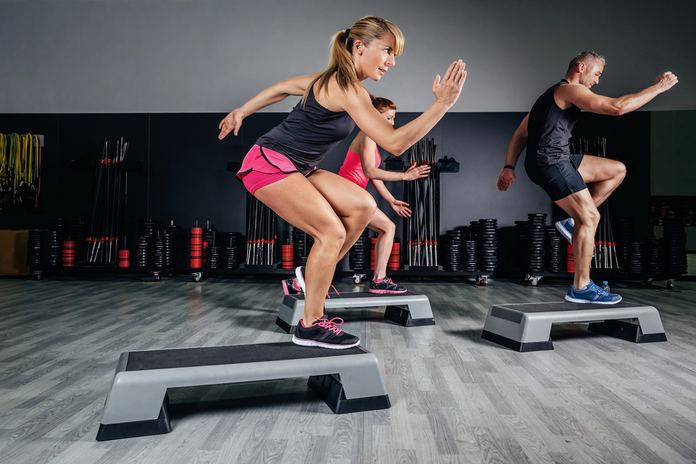Exercises for Peripheral Neuropathy

you are living with peripheral neuropathy, there are exercises you can do to help improve your condition. Exercise is an important part of any neuropathy treatment plan as it helps improve blood flow and keep your muscles strong. (11)
There are a number of exercises you can do to help improve your peripheral neuropathy. When starting an exercise, be sure to start slowly and increase the intensity gradually. Listen to your body carefully and put a brake if you experience any pain or discomfort. Exercising regularly can help improve your symptoms and quality of life.
Aerobic exercises
Aerobic exercises have been shown to be beneficial for people with peripheral neuropathy. They can help improve muscle strength, balance, and coordination. They can also help improve blood flow (circulation) and nerve function. Aerobic exercises can be done in a variety of ways, including walking, jogging, biking, swimming, and dancing.
It is important to start slowly when beginning an aerobic exercise program for peripheral neuropathy and to gradually increase the intensity as you become more fit.
- Brisk walking
Aerobic exercise involves any activity that gets your heart rate up and causes you to breathe harder. Brisk walking is an excellent form of aerobic exercise for people with peripheral neuropathy. It is easy to do, requires no special equipment, and can be done anywhere.
This aerobic exercise has been shown to improve nerve function and reduce pain in people with peripheral neuropathy. It can also help improve mobility in the joints and overall fitness levels. If you are suffering from peripheral neuropathy – especially in the legs – consider adding brisk walking to your treatment plan.
- Bicycling
Bicycling is a great exercise for people with peripheral neuropathy because it is low impact and gentle on the joints. It also helps improve circulation and strengthens muscles. In addition, cycling can be done indoors or outdoors, making it a versatile exercise option.
If you are living with peripheral neuropathy, talk to your doctor about whether bicycling might be a good option for you. Start slowly and build up your endurance over time.
- Swimming
It is a great form of exercise for people with peripheral neuropathy. It helps improve blood flow and circulation. It also strengthens the muscles in your arms and legs, which can help reduce symptoms of neuropathy. It is a good way to stay active, and it’s something you can do even if you have limited mobility.
Swimming also helps keep the body flexible and strong. In addition, it is a low-impact exercise, so it’s gentle on the joints and muscles.
Stretches
There are a variety of stretches that can help to relieve the symptoms of peripheral neuropathy.
- Ankle circle
One such stretch is the ankle circle. To do this, stand with your feet hip-width apart and draw circles with your ankles, first in one direction and then in the other.
A new study suggests that ankle circles may help improve symptoms in people with peripheral neuropathy. Researchers randomly assigned 60 people with peripheral neuropathy to do ankle circles for 30 seconds or to walk for 30 seconds. The participants then rated their symptoms on a scale of 0 to 10.
The average symptom score was lower in the ankle circle group than in the walking group. In particular, the scores for weakness, numbness, and pain were lower in the ankle circle group.
This study provides evidence that ankle circles may be helpful for people with peripheral neuropathy. More research is needed to confirm these findings and to determine the best way to use this exercise for this condition.
- Toe curl
People with peripheral neuropathy may find relief from toe curls. This exercise helps to improve blood circulation and strengthens the muscles and nerves in the feet. To do a toe curl, sit in a chair with your feet flat on the floor. Curl your toes up towards your shins as far as you can, then release them. Repeat 10-15 times.
You can also try standing on one foot and slowly bending the knee of the other leg, holding for 10 seconds before releasing.
- Calf stretch
A calf stretch for peripheral neuropathy can help improve blood flow and reduce pain. This stretch is simple to do and can be performed in a seated or standing position.
To perform the seated calf stretch, sit with your feet flat on the ground and your knees bent. Place your hands on the floor and raise your body upward while keeping your heels on the ground. Hold this position for 10-15 seconds before lowering yourself back to the starting position. Repeat 3-5 times.
To perform the standing calf stretch, stand with your feet hip-width apart and place your hands on a wall or stable surface for balance. Shift your weight onto one foot (left) and slowly raise the other (right) heel so that you feel a stretch in the calf muscle. Hold this position for 10-15 seconds before lowering yourself back to the starting position.
These are just a few examples of stretches that can help to relieve symptoms of peripheral neuropathy; be sure to discuss any stretches you’d like to try with your doctor or physical therapist to ensure they are appropriate for you.
